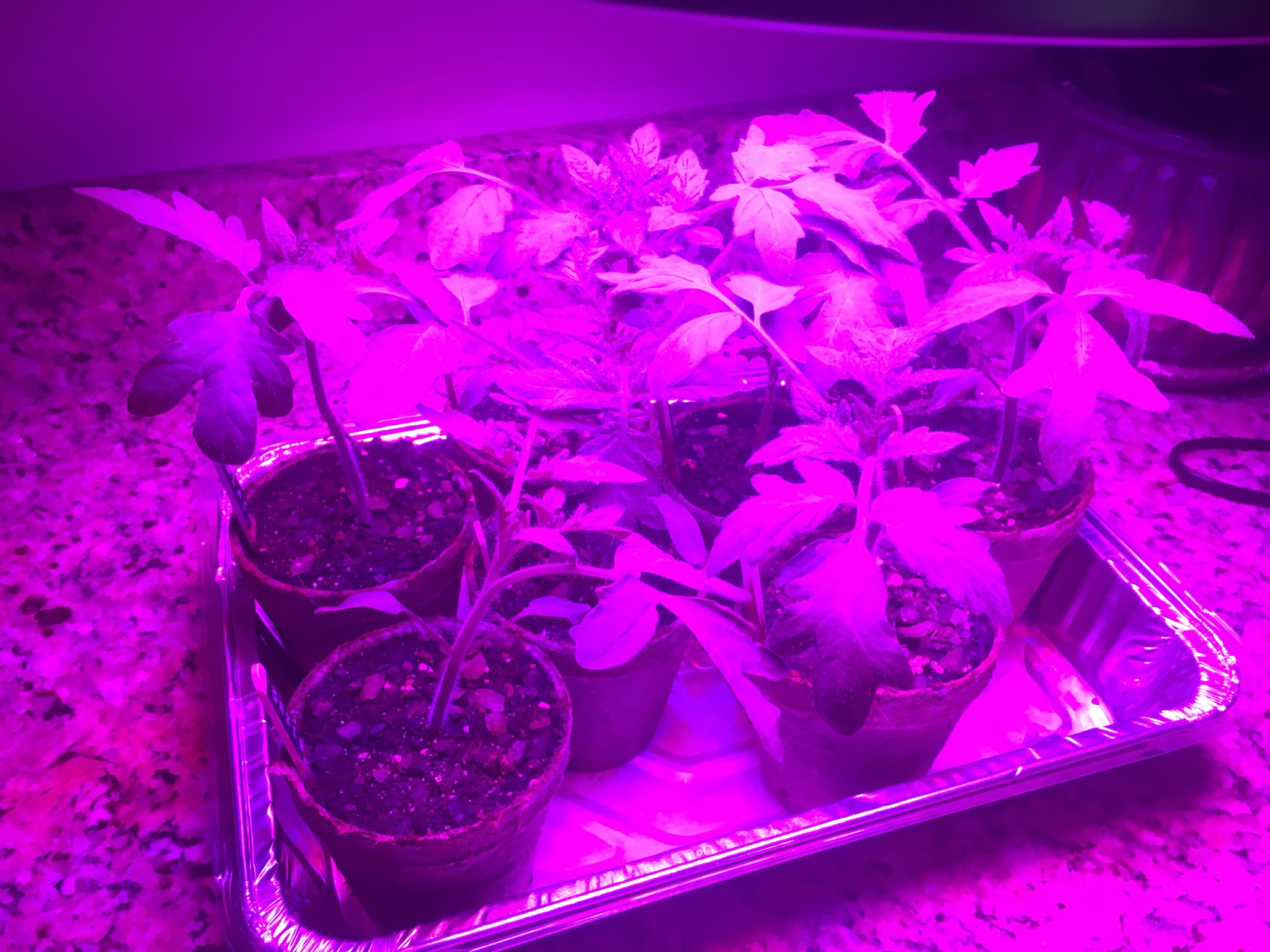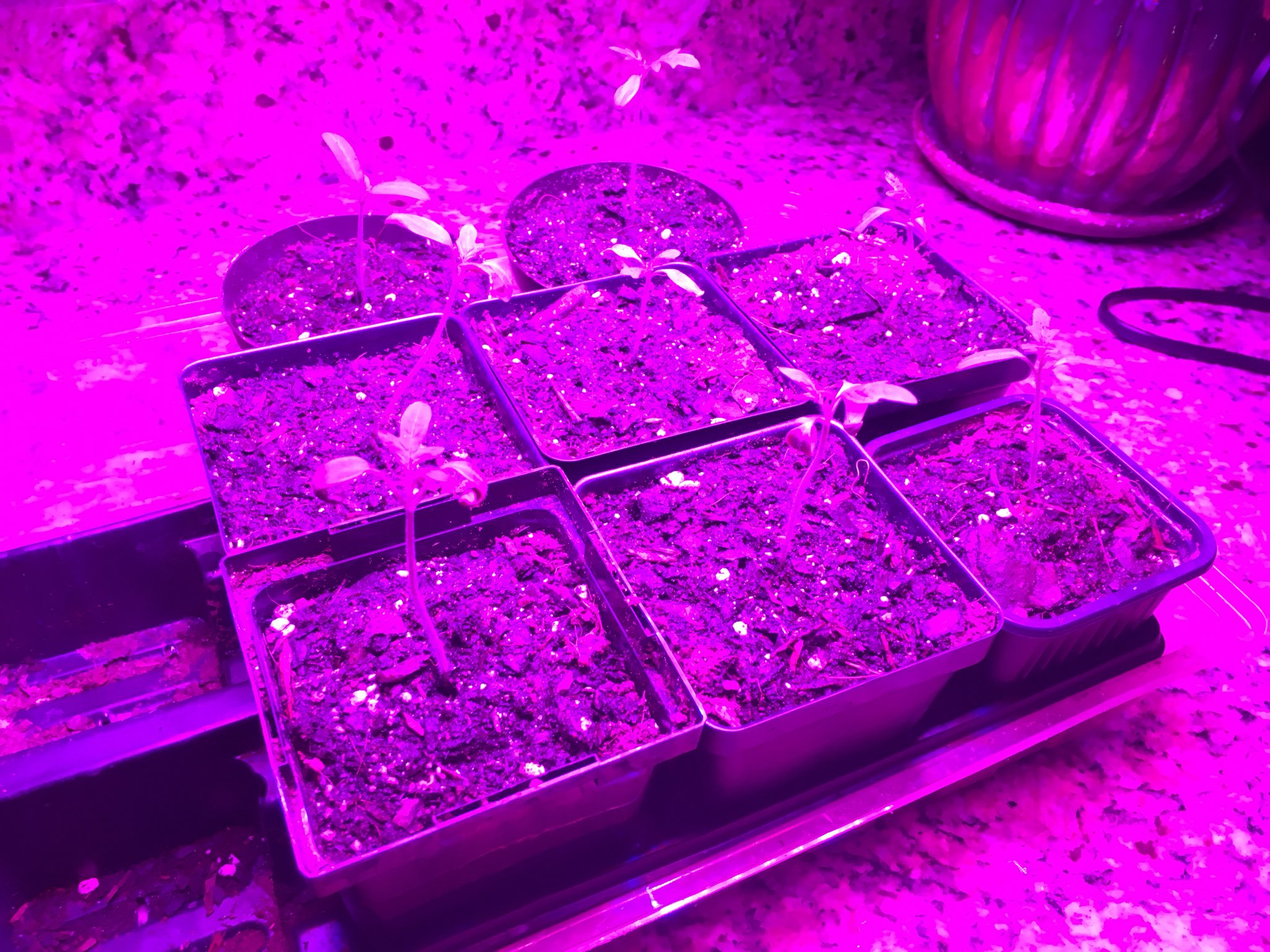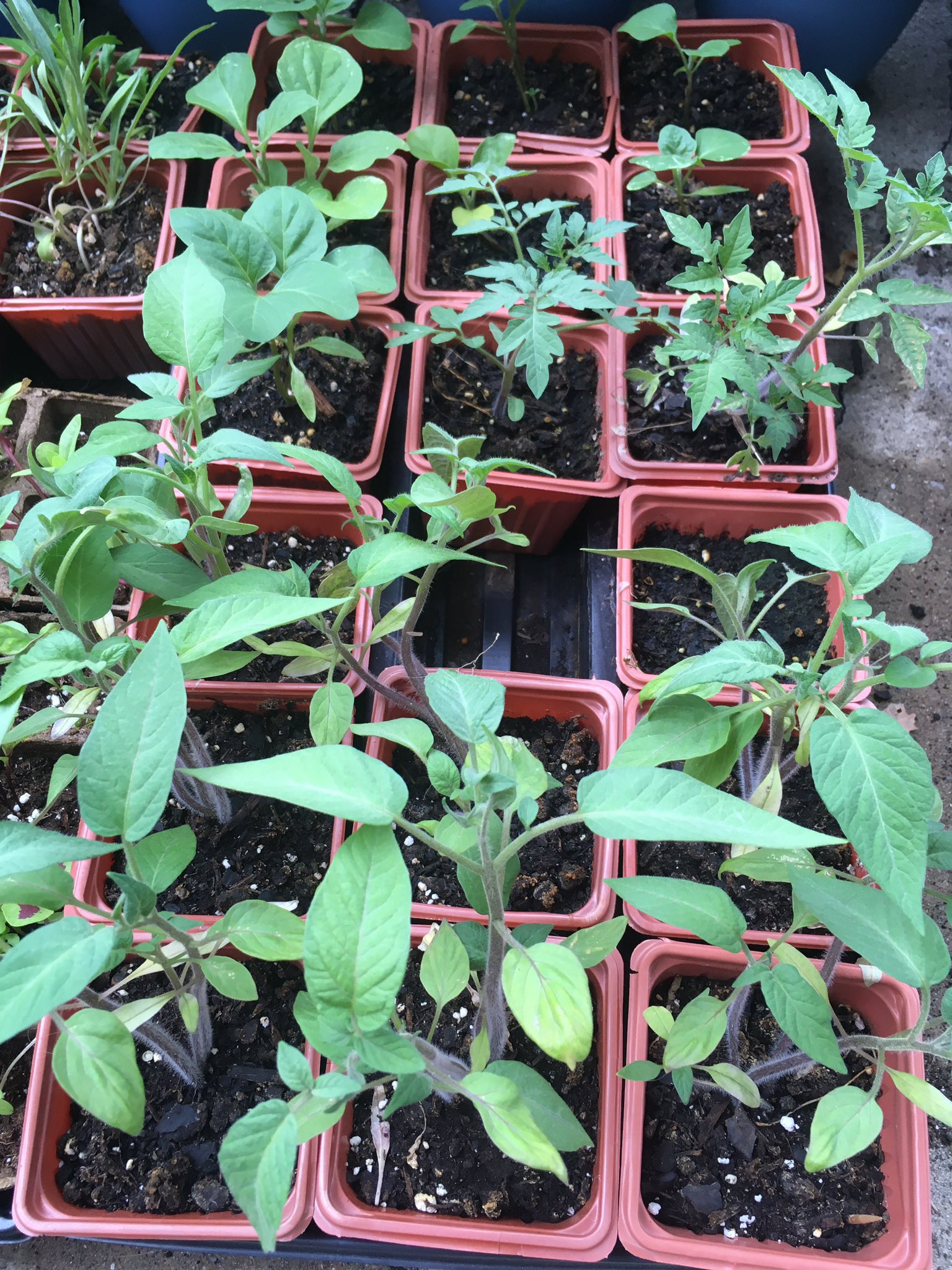
Growing tomatoes indoors isn’t just about having fresh produce at your fingertips. It’s a labor of love that bridges the gap between seasons, allowing you to enjoy the taste of summer even in the dead of winter. And when you bring artificial light into the mix, you’re in for a horticultural treat that defies the boundaries of traditional gardening.
In this guide, I’ll take you through the essential steps of “Growing Tomatoes Indoors with Artificial Light,” from setting up your indoor garden to harvesting ripe, juicy tomatoes. You’ll discover the lighting options, tomato varieties, and care techniques that can turn your indoor tomato venture into a thriving success.
So, let’s roll up our sleeves, get our hands dirty, and embark on this green-thumb adventure.
Table of Contents
Can You Grow Tomatoes With Artificial Light?
Indoor tomato cultivation using artificial lighting is a common practice, especially in regions with limited natural sunlight or during the colder months. By providing the right type of grow lights, appropriate light duration, and intensity, you can effectively grow healthy and productive tomato plants indoors. This method allows for year-round tomato production and can be a great option for those with limited outdoor gardening space.
Right Light For Growing Tomatoes Indoors with Artificial Light
1. LED Lights: Bright Beginnings

LED lights are the headliners in the world of indoor gardening. They offer a full spectrum of light, from the cool blues to the warm reds, ensuring your tomato plants get the VIP treatment they deserve.
Why Led Lights Are Best For Growing Tomatoes Indoor
Energy-Efficient Brilliance
LED lights are the stars of energy efficiency. Just like a seasoned performer who gives their all without overextending the budget, LEDs consume significantly less electricity compared to traditional lighting options. This energy efficiency not only benefits your pocket but also contributes to a more sustainable and environmentally friendly approach to indoor gardening. You can keep those LED lights running for extended hours without worrying about exorbitant electricity bills.
Full-Spectrum Magic
When it comes to providing your tomato plants with the right wavelengths of light for every stage of their growth, LED lights perform like true magicians. They offer a full spectrum that mimics the natural sunlight, encompassing the crucial blue and red wavelengths along with others. This full-spectrum magic means your tomato plants will thrive from their initial days as seedlings right through to the bountiful harvest. The blue light encourages robust vegetative growth, while the red light stimulates flowering and fruit development. With LED lights, your tomatoes receive the complete light menu they need to flourish.
Long-Lasting Performance
- LED lights are akin to marathon runners in the world of lighting. They have an impressive track record of delivering top-notch performance season after season. The longevity of LED lights is truly remarkable; they can last for tens of thousands of hours without significant degradation in their output. This means that once you’ve set up your LED lighting system for your indoor tomato garden, you can count on its reliability and consistency for an extended period. You won’t need to worry about frequently replacing bulbs or making adjustments. LED lights are designed to be the dependable workhorses that keep your tomato plants in the limelight from germination to harvest.
2. Fluorescents: Affordable Elegance

Fluorescent lights, particularly T5s, are the budget-friendly darlings of indoor tomato growers. They might not have the glitz and glamour of LEDs, but they get the job done:
- Ideal for starters: T5 fluorescents are like friendly mentors for beginners in indoor tomato cultivation.
- Cool and cozy: Their gentle, cool light replicates natural sunlight, creating a comfortable atmosphere for your tomato plants.
- Perfect for seedlings: T5s play a crucial role in raising strong, healthy tomato seedlings, the foundation of your indoor garden.
3. HID Lights: The Dynamic Duo
HID lights, encompassing Metal Halide (MH) and High-Pressure Sodium (HPS) lights, form the dynamic duo of indoor tomato lighting. It’s like having two versatile actors ready to switch roles as your tomatoes grow:
- MH lights: These are the youthful energy boosters, ideal for the vegetative stage when your tomatoes are reaching for the stars.
- HPS lights: Think of HPS as the seasoned performers who shine when it’s time for flowering and fruiting, delivering those luscious tomatoes.
Tomato Varieties To Grow Indoors with Artificial Light

The journey to growing tomatoes indoors starts with choosing the right seeds. Not all tomato varieties are suitable for indoor cultivation. Here are some essential considerations:
Pick a Variety Resistant to Disease
As you embark on your indoor tomato-growing adventure, it’s vital to select tomato varieties that are resistant to common diseases. Since indoor plants are isolated from outdoor elements, disease resistance is crucial to their long-term health.
Determinate (Bush) vs. Indeterminate (Vining) Tomato Plants
Understanding the growth habits of different tomato plants is essential. Determinate tomato plants have a predetermined height limit, making them easier to manage indoors. In contrast, indeterminate varieties keep growing, requiring more space and support.
For indoor tomato cultivation, opt for determinate varieties like “Tiny Tim,” a cherry tomato with high yield and no staking required. Another excellent choice is the “Yellow Pear Tomato,” which is easy to grow and ideal for canning and sauces. “Gardener’s Delight” is a compact variety that yields an abundance of red cherry tomatoes, perfect for indoor gardening.
Pick Tomato Varieties that Work Well in Containers
Tomatoes have deep root systems, so it’s essential to choose varieties that thrive in containers. This flexibility allows you to move your plants as needed, ensuring they receive adequate light and space.
How Much Light Does A Tomato Plant Need Indoors?

Perhaps the most critical factor in successful indoor tomato cultivation is adequate light. To mimic natural sunlight, full spectrum LED lights are the preferred choice. These lights provide the various wavelengths necessary for different growth stages.
Cool-colored lights (around 6500K) stimulate germination and leaf development, while warm-colored lights (approximately 2700K) promote flowering and fruiting. Combining both types of bulbs optimizes plant growth.
High-Pressure Sodium (HPS) lights can also work well but produce more heat, requiring careful monitoring to prevent drying out the plants.
To nurture your tomato stars under artificial light, it’s essential to get a few backstage details right:
- Position the lights: Hang the lights 2-4 inches above your tomato plants, like setting the perfect stage lighting.
- Lighting schedule: Keep the lights on for 14-16 hours a day, just like rehearsals for a big show.
- Temperature control: Maintain a cozy 70-75°F (21-24°C) in your indoor garden, creating the ideal environment for your tomato stars to thrive.
- Avoid placing your plants near vents or cold windows, which can expose them to temperature extremes.
Feeding Tomato Plants Indoor
Mix in Slow-Release Fertilizer
Before planting, mix slow-release fertilizer into the soil to provide essential nutrients throughout the growing season. This eliminates the need for frequent fertilization, as nutrients are released gradually over time.
Watering For Indoor Tomatoes Under Artificial Light
Watering indoor tomatoes with artificial light requires special consideration of how the artificial light influences the watering needs of your plants. Artificial lights emit heat, which can lead to increased evaporation of water from the soil. As a result, indoor tomatoes under artificial light may require more frequent watering compared to those grown in natural sunlight.
Artificial light provides a consistent and uniform light source. This can cause the entire plant, including the soil, to receive light evenly, potentially accelerating the rate of transpiration. It can sometimes contribute to higher humidity levels in an indoor garden. Elevated humidity can impact water requirements, as it affects the rate of transpiration.
To effectively water indoor tomatoes under these conditions, monitor soil moisture regularly, adjusting watering frequency and amount to maintain consistent moisture without overwatering, thus ensuring healthy tomato growth.
Harvesting Your Tomatoes Indoor
Patience is essential when it comes to harvesting tomatoes. It typically takes about 80-85 days for indoor plants to mature and produce fruit. Harvest tomatoes when they appear ripe and feel soft to the touch. Use a knife to cut stems when harvesting from above, taking care not to damage the foliage.
Will Tomatoes Ripen Under Grow Light?
Tomatoes can ripen under grow lights when provided with the right conditions. To facilitate ripening, use grow lights with a full spectrum, ensure 12-16 hours of daily light, adjust light intensity, maintain suitable temperatures (65-75°F), control humidity, and properly prune and support the plants for good air circulation and light penetration. With these factors in place, tomatoes can ripen indoors under artificial lighting, allowing for homegrown, fully matured fruit.
Pinch Back New Growth
- After your initial harvest, your tomato plants may continue to produce new growth, including additional branches, leaves, and blossoms. To divert the plant’s energy towards fruit production rather than excessive foliage, it’s advisable to pinch back or prune tomato plants of this new growth. Here’s how to do it:
- Identify Suckers: Suckers are the small shoots that develop in the crotches between the main stem and side branches. These are often the areas where new growth appears.
- Pinch Suckers Off: Using your fingers or small pruning shears, gently pinch off these suckers when they’re still small. It’s essential to do this carefully to avoid damaging the main stem or nearby branches.
- Focus on Airflow and Light: By removing excess foliage, you’re enhancing airflow and sunlight penetration within the plant’s canopy. This not only reduces the risk of diseases but also helps the existing and new fruit to ripen evenly.
- Prioritize Fruit-Bearing Branches: Pay attention to the branches that have fruit or flowering clusters and ensure they receive the most sunlight and space. These branches are your primary focus for encouraging further fruit production.
- Using Cytokinin Plant Hormone:Cytokinin is a plant hormone that plays a vital role in regulating plant growth and development, including flowering and fruiting. By applying a cytokinin-based product to your tomato plants, you can stimulate additional flowering and fruiting. Here’s how to use cytokinin effectively:
Conclusion
Your journey of “Growing Tomatoes Indoors with Artificial Light” is a testament to your dedication and love for gardening. It’s not just about cultivating tomatoes; it’s about creating a thriving, green oasis in the heart of your home. With the right lighting, choice tomato varieties, and proper care, you can enjoy homegrown tomatoes throughout the year.
So, go on, set the stage, and let your indoor tomato garden steal the spotlight. Break a leg, and may your tomatoes be ever bountiful!
